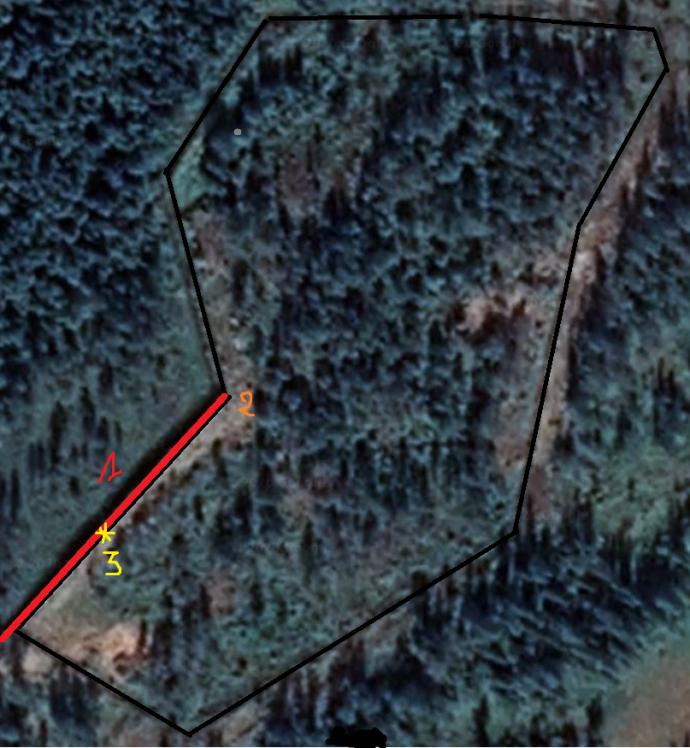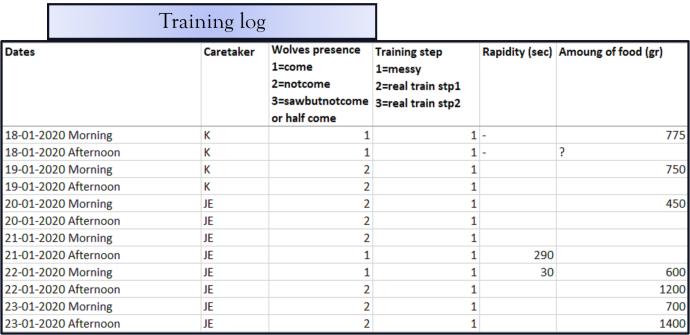Initial situation
The enclosure is big, continuous observation is not possible as the wolves are mostly invisible.
The wolves were coming randomly when called depending on multiple factors not all known.
The rapidity they come answering the call was also varying greatly and they did not want to approach the caretakers closer than the distance that separates the camera's location from the food place.
TRAINING GOALS
- Make the wolves come 100% of the time when called,
- Make them come faster,
- Reduce the distance they accept between them and the caretakers

Training method
First training step
Twice a day at exactly the same time:
The caretaker walk up the bridge arrives at the end of it calls the wolves
Throws the food in the food location
Walk back to the cameras' place
Wait for the wolves to come and eat,
Leaves when the wolves are looking at him/her.
GOAL: Make the wolves come regularly faster and get use to the routine.
Second training step
Same as the first one with one change
The caretaker will wait at the end of the bridge to see the wolves before calling them.
GOAL: As the wolves witness the human throwing the food it will create a positive association for the wolves between humans and the food.
Third training step
Same as second step with small changes.
The caretaker only throws a small amount of food in the enclosure in the food location.
When walking back to the cameras' location, the caretaker will stop halfway to see if the wolves are coming already.
If they do
The caretaker throws more food in the enclosure and walk back to the cameras' location.
Then wait for the wolves to come, throw more food,
Wait for them to look at him/her and leave.
If they don't
The caretaker will directly walk to the cameras' location.
Then wait for the wolves to come, throw more food,
Wait for them to look at him/her and leave.
GOAL: Keep working on the positive association between humans and food. Reduce the distance between humans and wolves

Observations and analyses
Most of the analyses were made based on the training log (see sample above) made by the caretakers during the training sessions.
Some observation were made on the videos of the training and lead to descriptive graphs of specifique behaviours.
ANALYSES:
Comparing if the wolves came/did not come/or half came to the food location before and after we put in place a reguler supervison of the training (february) was made through a Pearson chi² test.
Responsible for this page:
Director of undergraduate studies Biology
Last updated:
06/18/20
